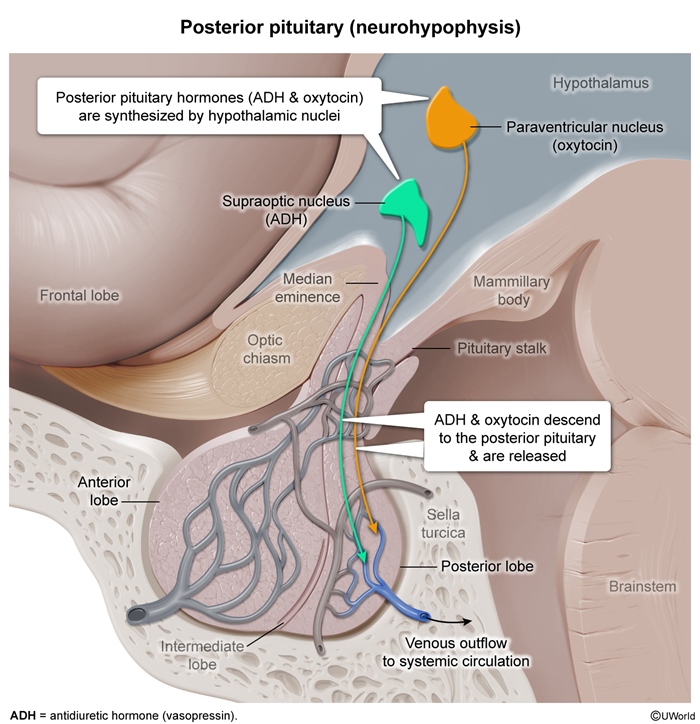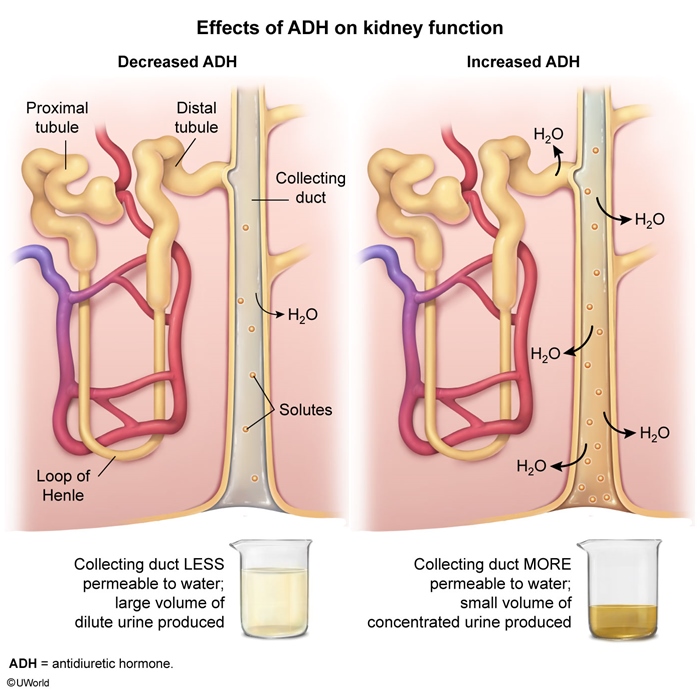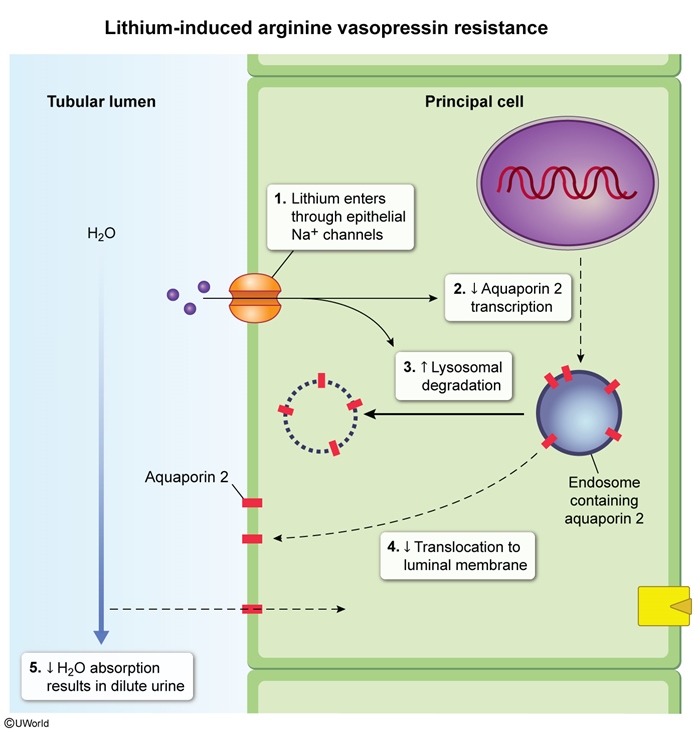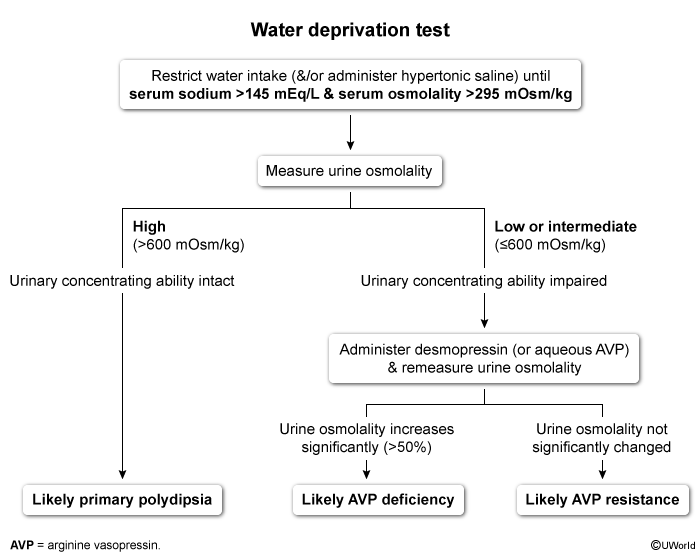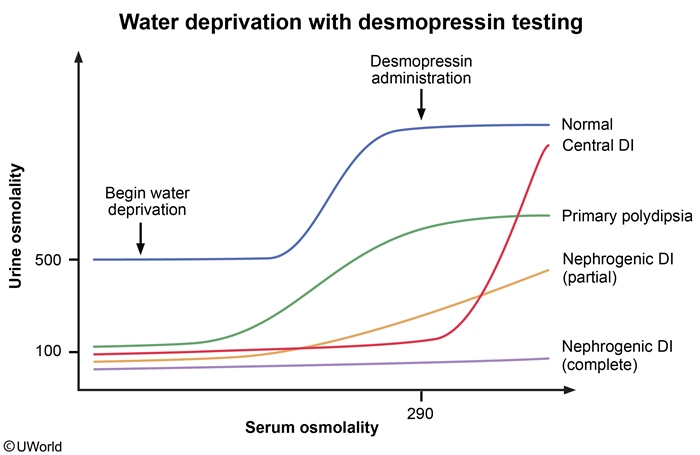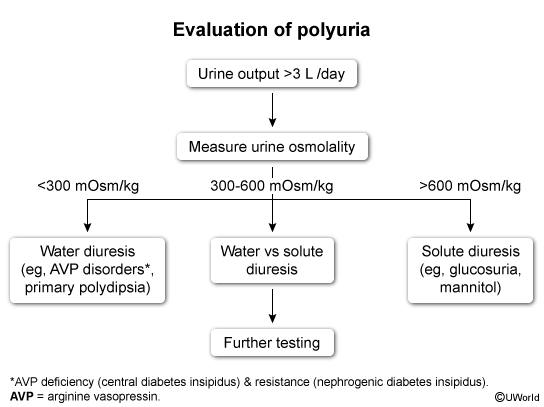Arginine Vasopressin Deficiency And Resistance (Diabetes Insipidus)
Article Sections
Introduction
Arginine vasopressin (AVP) deficiency and resistance are disorders characterized by the excretion of abnormally large volumes of dilute urine (ie, polyuria) and excessive thirst (ie, polydipsia). Previously known as central diabetes insipidus (DI) and nephrogenic DI, these conditions result from impaired production, release, or action of AVP. Also known as antidiuretic hormone (ADH), AVP is essential for regulating water balance. The terms AVP and ADH are used interchangeably throughout this article.
AVP physiology
AVP is synthesized by magnocellular neurosecretory cells in the supraoptic nuclei of the hypothalamus (Figure 1). These neurons project axons to the posterior pituitary gland, where ADH is stored for later release into the circulation. ADH release is primarily stimulated by increased plasma osmolality or decreased blood volume. Osmoreceptors in the hypothalamus detect changes in plasma osmolality; baroreceptors in the cardiovascular system sense changes in blood pressure.
Continue Learning with UWorld
Get the full Arginine Vasopressin Deficiency And Resistance (Diabetes Insipidus) article plus rich visuals, real-world cases, and in-depth insights from medical experts, all available through the UWorld Medical Library.
Figures
